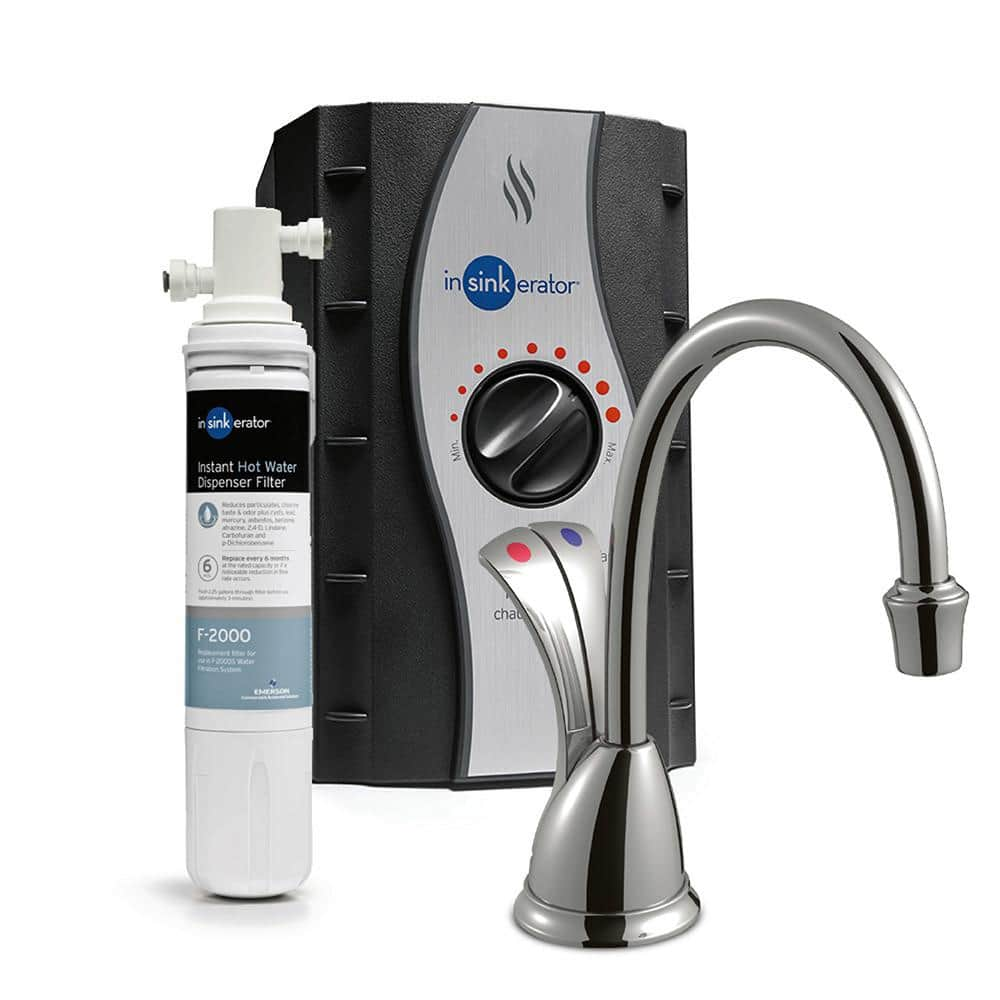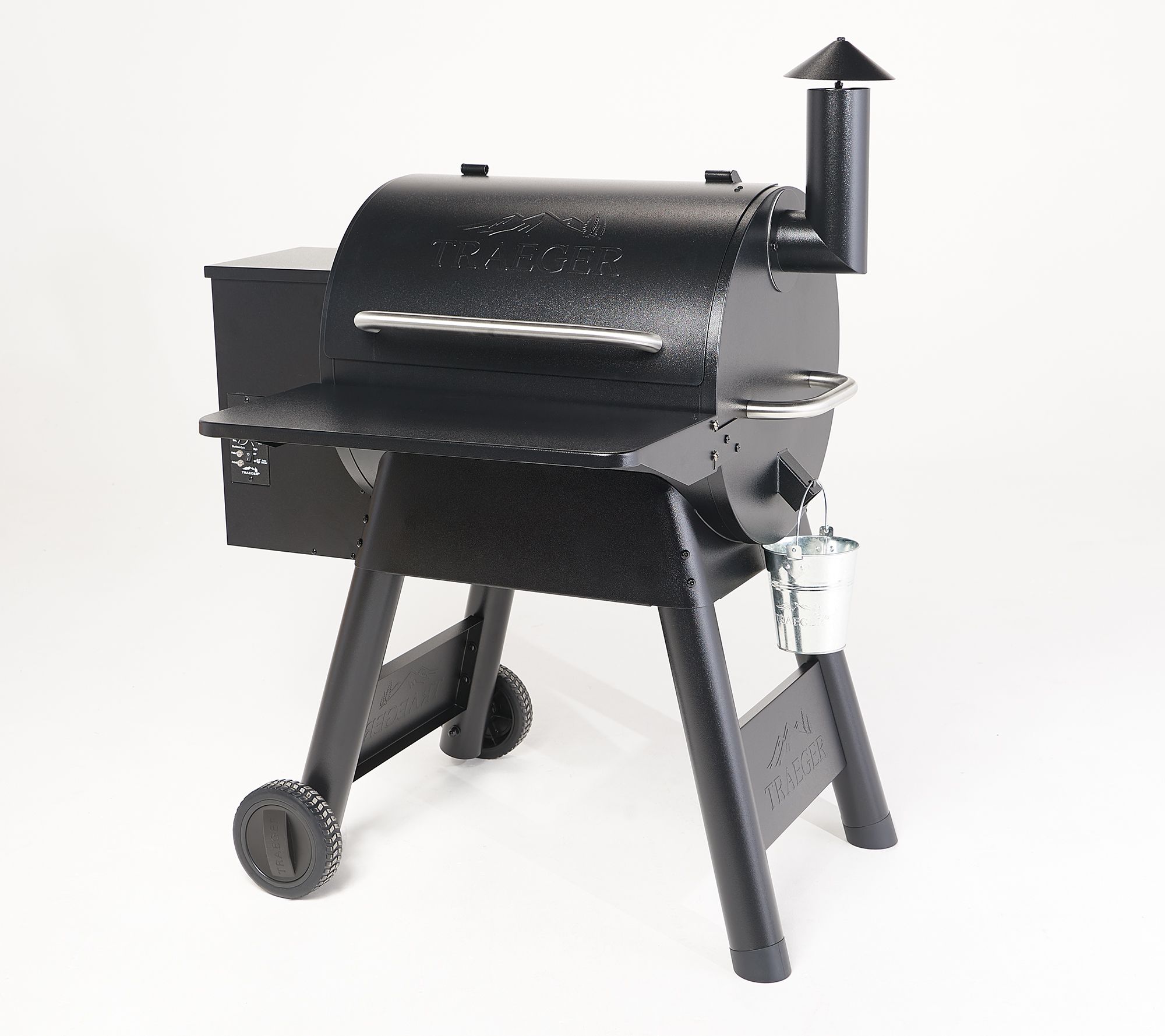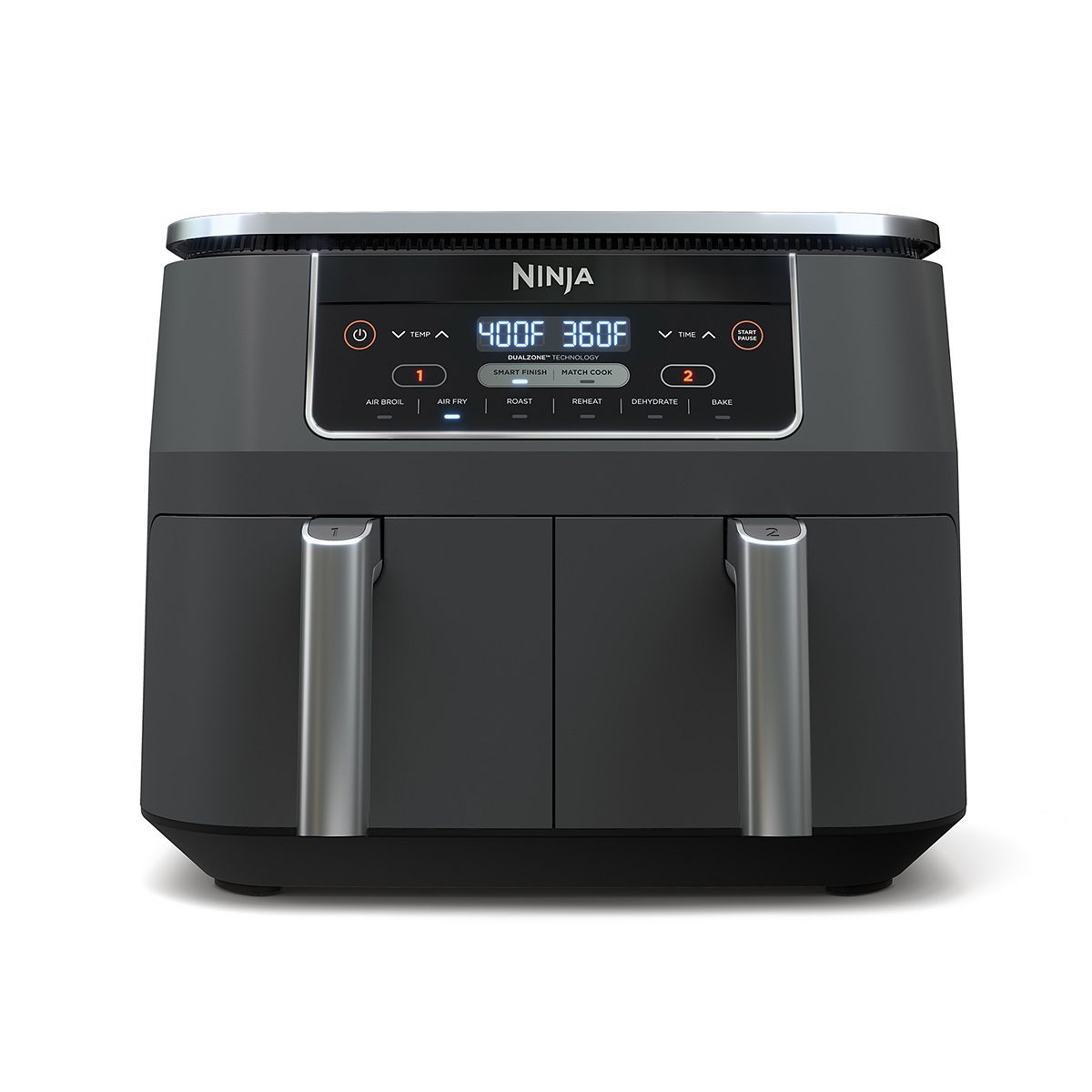InSinkErator Involve Wave Instant Hot & Cold Water Dispenser with Premium Filtration System & 2-Handle 6.75 in. Faucet in Chrome
Includes Premium Filtration System & 2-Handle Fixed Faucet. 2/3 Gal. Tank with Adjustable Temperature (160°F – 210°F). Backed by our 3-Year “We Come to You” Limited In-Home Warranty.
The InSinkErator Involve HC-Wave Hot Water Dispenser delivers up to 60 cups of near-boiling & cool drinking water per hour to quickly prepare coffee, loosen tough foods, rinse utensils, or warm baby bottles. The Chrome faucet offers a dual-handle design and is designed for single-hole installation and features durable metal construction with a mid-arc, non-swivel spout. The F-2000S Premium Water Filtration System reduces particulates, chlorine taste and odor, plus cysts, lead, mercury, and other impurities for better-tasting hot beverages. It has a ¼ in. quick-connect fitting and is replaced easily without contact with used filter material.
- UL certified hot water tank with durable, stainless-steel construction delivers up to 60-cups of hot and cool per hour
- Includes an all metal, non-swivel, dual-handle faucet in a sleek chrome finish with hot and cold handles
- Designed for single-hole installation
- Includes a 2/3 Gal. stainless-steel tank with easily adjustable temperature control from 160°F up to 210°F
- Premium filtration system includes head bracket, one (1) F-1000 replacement filter, 2-polyethylene tubes and quick-connect fitting, 2-mounting screws, 1/4 in. compression fittings
- System has 500 Gal. filter capacity to reduce particulates, chlorine taste and odor plus cysts, lead, mercury, asbestos, benzene, atrazine, 2,4-D, lindane, carbofuran and p-dichlorobenzene, for clean-tasting water
- Twist-and-lock design for quick-and-easy filter changes and automatic water shut-off during cartridge replacement
- For optimal performance, replace water filtration cartridge every 6-months
- NSF standard 42 and 53 certified for quality assurance
- Automatic water shut-off during filter cartridge replacement
- Faucet and hot water tank backed by a 3-year we come to you limited service warranty to cover repair or replacement by an authorized dealer
- Filtration system is backed by a 1-year we come to you limited service warranty to cover repair or replacement by an authorized dealer
Additional information
| Connection size (in.) | 3/8 In. |
|---|---|
| Faucet Height (in.) | 6.75 |
| Spout Height (in.) | 6.75 |
| Certifications and Listings | UL Listed,cUL Listed |
| Manufacturer Warranty | 3 year parts and in home service |






by Jerry
So happy to get our InSinkErator Instant Hot & Cold Water Dispenser installed in our new home. Our new house didn’t have one and we really missed not having one to use here. We use it daily to heat our cups before we have coffee, cleaning the tops of canned goods before they are opened, rinsing off dishes, making hot chocolate, and any time I need hot water. We also added the InSinkErator filter to be sure our water is pure.
by Rhonda
Works very well and gets steamy hot! I’ve had 2 others in the past. I would definitely recommend.
by Louis
Works great! Arrived on time and in good condition. Easy to install. Would refer to a friend
by John
product arrived early. Product was installed in 7 minutes.